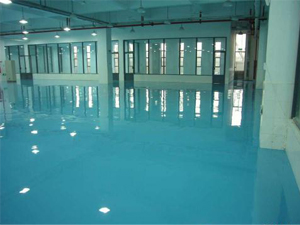Hotline
13071380888
13071380888
Epoxy self-leveling floor is a solvent-free, self-leveling, dense particle-type floor. It has the characteristics of automatic leveling, wear resistance and pressure resistance, and high clean and beautiful environment requirements. In recent years, it has been well received and applied by many industries. The performance of epoxy self-leveling is impeccable, but due to the quality of the construction technology and the coating itself, the quality difference of the self-leveling floor is also very significant. Here are three aspects to introduce how to judge the quality of epoxy self-leveling during acceptance.
First, fullness. Fullness is to see if the ground's reflectivity can reach 95%, is it full enough. This indicator has not been valued in the past, but as the society progresses and people's demands gradually increase, this indicator has gradually become a basic technical requirement. Generally, the reflectance of less than 85% is unqualified.
Second, the hardness. In order to have sufficient abrasion resistance on the ground, many customers require a certain hardness on the floor surface. In order to meet industrial requirements, we generally require that the floor hardness be greater than 2H. However, the hardness of the self-leveling after the filler is easy to sink is not too high, so it is preferable to select the filler which is not easy to sink.

Third, the surface condition. Epoxy self-leveling floor is a kind of floor with smooth surface, beautiful appearance and excellent decorative effect. Therefore, when accepting, it should be clear whether the surface of the floor is flat, bright and can achieve mirror effect, and can not contain particles and other impurities. Object.